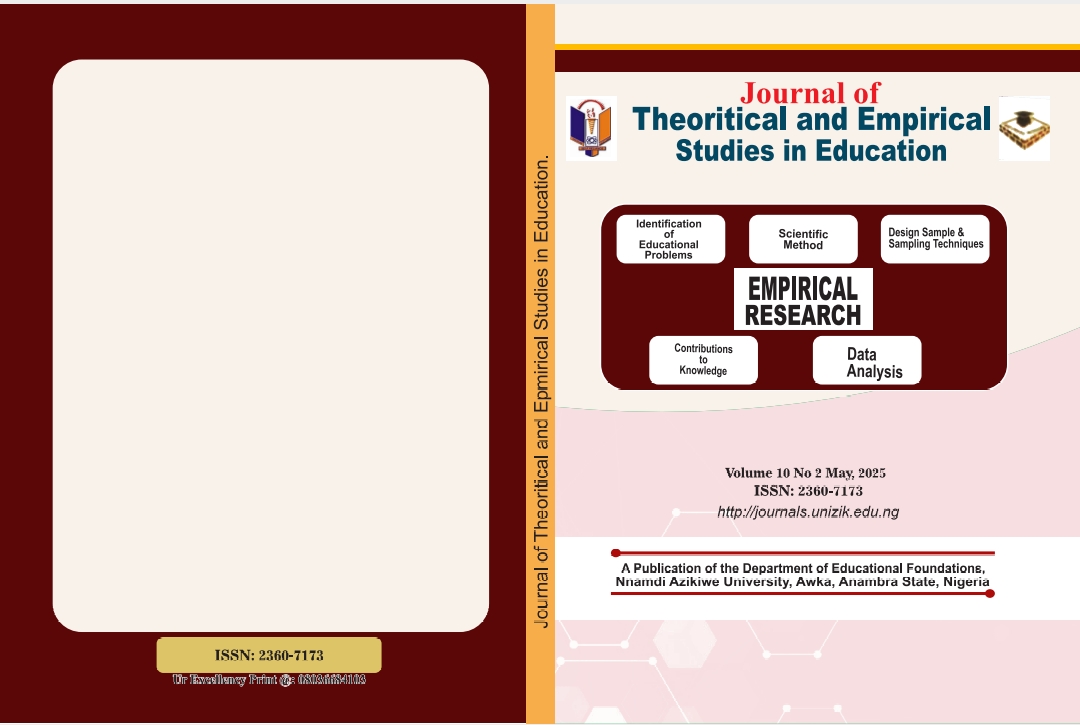Effect of Technology-Based Visual-Kinesthetic Learning Strategy on Reading Comprehension and Fluency among Primary III Pupils of Kaduna North Local Government Area, Kaduna State
Keywords:
Technology-based Instruction, Visual-kinesthetic learning, Reading comprehension, Digital tools, Fluency enhancement.Abstract
This study investigated the effect of technology-based multisensory instruction
through the visual-kinesthetic learning strategy on enhancing reading
comprehension and fluency among Primary III pupils in Kaduna North Local
Government Area. The study's objectives included examining the effects of
modeling fluency, interactive reading practice, and assessment-feedback with
digital tools. A quasi-experimental design was employed. The study population
consisted of 5,625 Primary III pupils and selected 133 pupils for the sake of study.
The experimental group comprised of 61 pupils while, the control group consisted
of 55 pupils. The study employed the Technology-Enhanced Reading
Comprehension and Fluency Assessment (TERCFA). Descriptive statistics
(mean, standard deviation) were used to answer the research questions. To test
the hypotheses, an independent sample t-test was used to compare the posttest
scores between the experimental and control groups. Results revealed that the
experimental group, which received the intervention using digital tools and
visual-kinesthetic strategies, demonstrated significant improvements in reading
fluency and comprehension compared to the control group. These findings align
with previous research emphasizing the positive impact of digital resources and
multisensory learning approaches on reading development. The study
recommends integrating technology in classrooms, providing teacher training,
and using feedback mechanisms to enhance student engagement and learning
outcomes. Future research should explore the long-term effects of these strategies
on reading fluency beyond Primary III.




